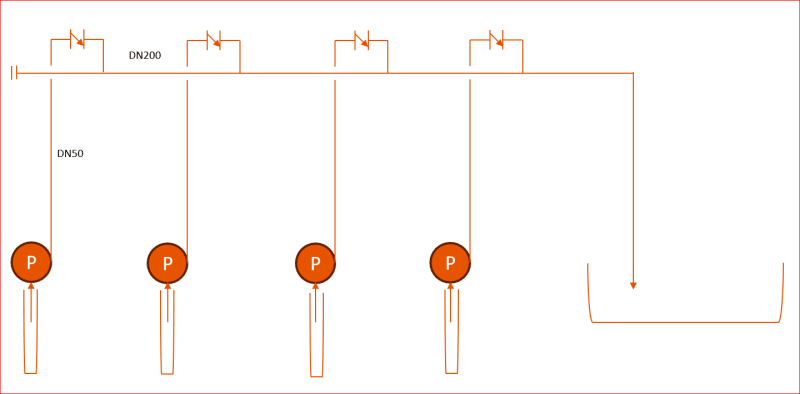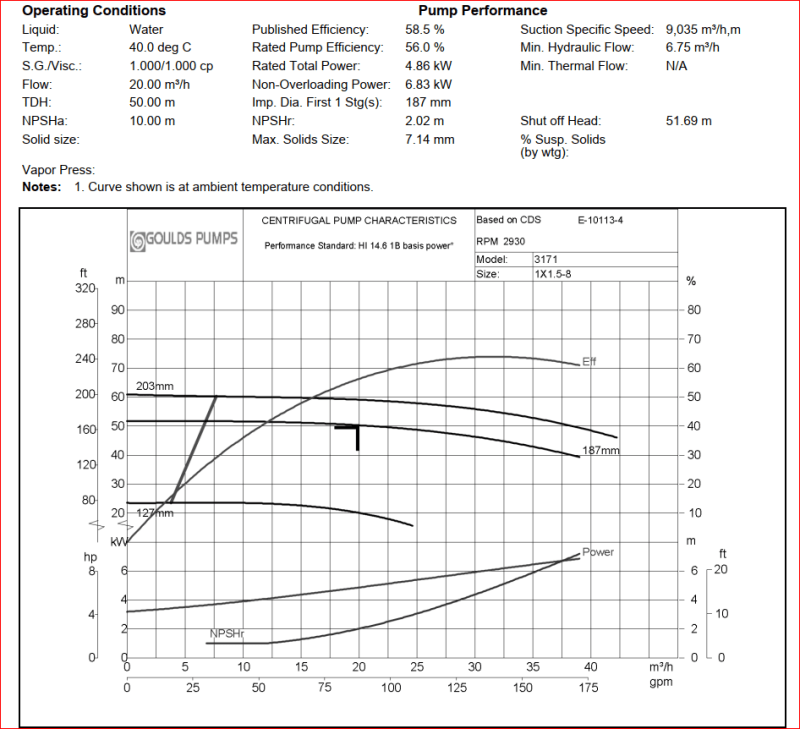ER_Azza
Mechanical
- Jul 18, 2018
- 54
Hi All
Need a a bit of help. Not my speciality in pump.
Has an old sump pump, pumping water on a 2" pipe to a header - check valve before entry to the 8" header (about 5 meter high). Pump is running at 1460rpm. Pump head is 20m.
Looking to buy a spare and the only one proposed/available by the vendor is one driving at 2930rpm with a pump head of 40m.
SAME flowrate.
What's your thought?
Need a a bit of help. Not my speciality in pump.
Has an old sump pump, pumping water on a 2" pipe to a header - check valve before entry to the 8" header (about 5 meter high). Pump is running at 1460rpm. Pump head is 20m.
Looking to buy a spare and the only one proposed/available by the vendor is one driving at 2930rpm with a pump head of 40m.
SAME flowrate.
What's your thought?



